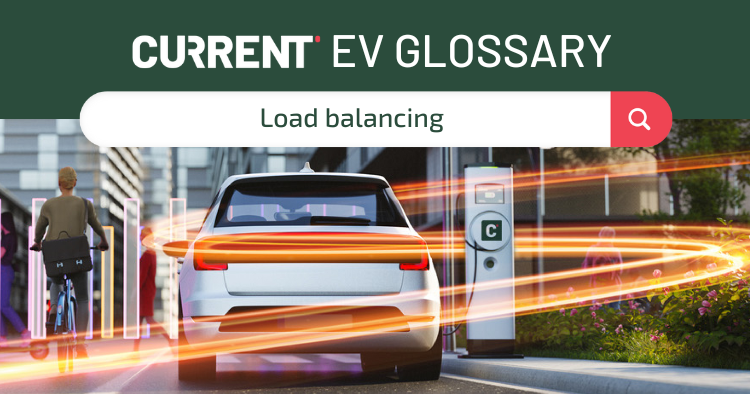Demand side response
Demand side response (DSR) is a technique used to manage the balance between energy supply and demand by adjusting the amount of electricity used by consumers during peak times. DSR plays a crucial role in balancing the power grid by reducing the need for expensive upgrades to the energy infrastructure. It helps to avoid blackouts and brownouts, improve the integration of renewable energy sources, and support the growth of electric vehicles. In this article, we'll cover the basics of demand side response, why it's important, the different types of DSR, and how it can be used for demand response for EV charging networks.
What is demand side response?
Demand side response refers to the practice of managing electricity demand from the consumer side, rather than increasing supply from the grid during periods of peak demand. It involves reducing or shifting the time of electricity usage by consumers to balance supply and demand, which helps to ensure that the power grid is stable and reliable. By participating in DSR programs, consumers can help to reduce the peak demand for electricity, which reduces the need for expensive upgrades to the energy infrastructure.
DSR programs work by offering incentives to consumers to reduce or shift their energy consumption. For example, utilities may offer lower rates for energy used during off-peak hours or incentives for consumers who reduce their energy usage during periods of high demand. In some cases, utilities may also remotely control appliances like air conditioners or water heaters to reduce energy usage during peak periods.
Why is demand side response important?
DSR is important for several reasons, including:
-
Avoiding blackouts and brownouts: The power grid can become overloaded during periods of peak demand, which can result in blackouts or brownouts. By reducing the demand for electricity during peak periods, DSR helps to avoid these disruptions and keep the power grid stable and reliable.
-
Supporting the integration of renewable energy sources: Renewable energy sources like wind and solar power are variable and can be difficult to predict. By using DSR to shift energy consumption to times when renewable energy sources are more abundant, utilities can better integrate renewable energy into the power grid.
-
Reducing the need for expensive upgrades to the energy infrastructure: Building new power plants or transmission lines can be expensive and take years to complete. By reducing the demand for electricity during peak periods, DSR can help to avoid the need for these expensive upgrades.
-
Supporting the growth of electric vehicles: The growing demand for electric vehicles (EVs) is placing additional strain on the power grid. By using DSR to manage the demand for electricity from EV charging stations, utilities can reduce the need for expensive infrastructure upgrades and ensure the reliability of the power grid.
What are the different types of DSR?
There are several types of DSR techniques that utilities use to manage the balance between supply and demand:
-
Time-of-use pricing: Consumers pay different prices for electricity based on the time of day. Prices are higher during peak demand periods and lower during off-peak hours. By encouraging consumers to shift their energy consumption to off-peak hours, utilities can reduce the demand for electricity during peak periods.
-
Interruptible load programs: Consumers agree to reduce their electricity usage during times of high demand in exchange for lower rates or other incentives. For example, a factory may agree to shut down non-essential equipment during a period of high demand in exchange for lower electricity rates.
-
Direct load control: Utilities remotely control appliances like air conditioners or water heaters to reduce electricity usage during peak periods. For example, a utility may turn off air conditioners in homes for short periods during a period of high demand.
-
Energy storage: Consumers use batteries or other forms of energy storage to shift electricity usage from peak to off-peak periods. For example, a consumer may charge an energy storage system during off-peak hours and use the stored energy during peak hours.
- Demand response for EV charging networks: Demand response for electric vehicle (EV) charging networks is a type of DSR that focuses on managing the demand for electricity from charging stations. By shifting charging times to off-peak periods, utilities can reduce the need for expensive infrastructure upgrades and ensure the reliability of the power grid. The demand response for EV charging networks is critical to supporting the growth of EVs while maintaining grid stability.
What is Demand Response for EV charging networks?
Demand response for electric vehicle (EV) charging networks is a type of demand side response (DSR) that focuses on managing the demand for electricity from charging stations. As more and more people switch to electric vehicles, the demand for electricity from charging stations is growing rapidly. Demand response for EV charging networks allows utilities to manage this demand by shifting the timing of charging to off-peak hours, when demand for electricity is lower.
This helps to reduce the strain on the power grid during peak periods and avoid the need for expensive infrastructure upgrades. By using demand response for EV charging networks, utilities can support the growth of electric vehicles while maintaining grid stability.
Conclusion
Demand side response is a critical tool for managing the balance between energy supply and demand. By using different types of DSR, utilities, and consumers can work together to reduce energy consumption during peak periods, improve the reliability of the power grid, and lower costs for all. The growing demand for EVs also highlights the importance of demand response for EV charging networks, which will help to ensure that the infrastructure keeps up with the rapid growth of EVs.
DSM provides a broader framework for managing energy demand, with a focus on reducing overall energy usage. As the world continues to transition to cleaner and more efficient energy sources, demand side response and management will play an increasingly important role in ensuring the stability and reliability of the power grid.
If you have more questions, please check out the rest of our glossary or get in touch.


